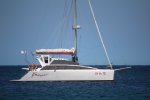BurnitBlue
Well-Known Member
Since you think that all catamarans have severe design limitations and a narrow window of usage, would you care to elaborate?
It would be interesting to take your view on how a 26t Lagoon 52 compares to a full Carbon Gunboat or maybe a Balance cat. Especially since all three are radically different. Lumping all catamarans together is like saying An Imoca 60 is just like a Hurley 22
All boats have design limitations as just about everything else. However, I sincerely believe that a catamaran has a narrower safe window than a monohull. A monohull is far more forgiving at sea. It is pointless to discuss individual boats that I have never even heard of. From the short list you gave I can only say that I would cross the Atlantic in a Hurley 22 in a heartbeat. Not so sure about the other stuff without a close inspection.
You seem to have taken my personal dislike of trampolines to an extreme accusation that I lump all catamarans together. Yes but in only general terms I do because I owned one for five years and crossed to the Caribbean and Bahamas twice and I am still alive. But there are individual examples that may put the crew'safety above comfort. I don't know of one except those that load the boat with various epirbs, liferafts, satelite devices, flotation suits, upside down escape hatches. Etc. They could all be needed and good stuff too. But my voyage on a Hurley 22 would actually make me feel safer with just a whistle and mirror.
Last edited:


